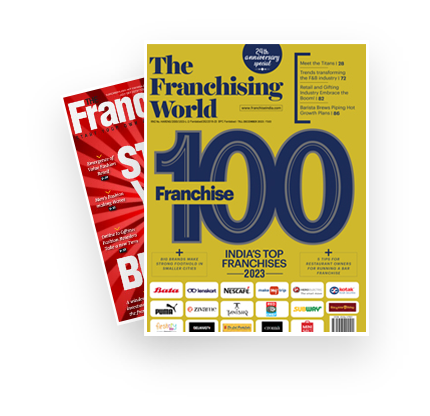
Franchising has taken hold worldwide as a "business in a box," allowing would-be entrepreneurs the ability to own and run a business with a famous brand, proven systems, and continued support. Yet franchises, though they provide an efficient way to business ownership, have their own special challenges and responsibilities.
In 2025, when franchising is increasingly technology-driven and multifaceted, potential franchisees need to dig deeper than glitzy sales presentations to make informed, solid decisions. Based on expert advice and actual case studies, here are five essential items to keep in mind before purchasing a franchise this year.
1. Know the Total Money Commitment
Most franchise sales presentations focus heavily on the franchise fee, but this is just one piece of the puzzle. The total cost to launch and run a franchise often includes several layers of financial commitment—some obvious, others not.
What You’ll Likely Pay:
- Franchise Fee: A one-time initial payment to the franchisor to license the brand and operating system. This varies from ₹3 lakhs for new brands to over ₹50 lakhs for mature international players.
- Startup Expenses: This consists of location build-out, signage, kitchen or retail equipment, furniture, fixtures, initial inventory, employees training, and pre-opening advertising.
- Working Capital: Most franchisees undercapitalize the cash required to operate the business during the first 3–9 months as revenues build.
- Recurring Royalties: Generally 4%–10% of gross sales, these fees support the franchisor's support infrastructure and brand management.
- Marketing Fees: Often, franchisees contribute 1%–5% of sales into a national or regional marketing fund. In other models, local store marketing is your only responsibility—and budget.
- Hidden Costs: This can include tech upgrades, insurance, license renewals, maintenance contracts, and staff turnover during the early phases.
Real Talk:
Suppose you’re buying into a well-known food franchise with a ₹15 lakh franchise fee. With a full buildout, tech systems, staffing, and opening marketing, your real startup cost could reach ₹50–70 lakhs. Always ask for a detailed investment breakdown from the franchisor—and talk to current franchisees to verify the numbers.
2. Assess the Business Model of the Franchise and the Brand's Strength

Purchasing a franchise is not simply purchasing a business—purchasing a system. The well-being of that system, then, is of extreme importance. Begin by getting inside the brand's DNA, the demand in the marketplace for its products or services, and the performance among locations.
Key Questions to Investigate:
- Is the brand current? A five-year-old hot franchise might be cooling off currently. Check online reviews, social media activity, and customer sentiment.
- Is the value proposition distinct and compelling? Speed, price, innovation, or experience—whatever it is, ensure the business model fills a gap in your market.
- Does the business expand well to multiple locations? A concept that excels in a tourist town might not do as well in suburbia. Know what markets the concept works in.
- What's the track record of the franchisor with franchisees? Check for litigation history, franchisee turnover, and media coverage. High franchisee turnover is a warning sign.
- How robust is their competitive advantage? Is the franchise spending on R&D, keeping up with market changes, and investigating new sources of revenue?
Bonus Insight:
In 2025, technology-powered brands who utilize AI for personalization, logistics, or inventory are commanding significant attention. A brand whose ordering system is antiquated or who has no mobile presence will be challenged to get today's digitally active customers.
3. Review the Franchise Agreement and Legal Terms
Your Franchise Agreement is your playbook—and although you'll likely want to dive in, it's important to know what you're signing up for. Once you sign, most agreements are binding for 5–10 years with little flexibility to make modifications.
Key Items to Keep an Eye On:
- Territory Rights: Will you have sole rights within your territory? Can other franchisees open adjacent locations?
- Performance Benchmarks: Are there compliance or revenue targets you are required to hit? If so, what are the consequences if you miss them?
- Renewal and Exit Terms: Can you automatically renew past the contract term? What are the terms to terminate or sell your franchise?
- Brand Use Restrictions: Can you market the business in any way you desire—or are there rules that must be followed?
- Transfer Clauses: If you do sell, must the buyer be approved by the franchisor? Do they charge transfer fees?
Legal Tip:
Always employ an attorney experienced in franchise law. They can explain your responsibilities, identify risks, and negotiate superior terms. Treat it as an advance insurance policy—one that insures your time, your money, and your peace of mind.
4. Evaluate the Training and Support System
The appeal of franchising is often rooted in support: “You’re in business for yourself, but not by yourself.” But how much support a franchisor actually provides can vary dramatically. Thoroughly evaluate the systems and commitment behind the franchise brand.
Things to Look For:
- Initial Training: Does it include both classroom and in-store learning? Does it cover technology, HR, compliance, and customer service?
- Field Support: Do you have territory managers or coaches that are assigned to assist in launching and expanding? How frequently do they stop by or check in?
- Marketing Assistance: Is the brand engaged in national marketing? Do you receive local campaign templates or toolkits?
- Technology: Do they give you a contemporary POS, CRM, and inventory system? Are there support avenues (chat, email, hotline) for technical problems?
- Peer Community: Is there a franchisee forum or mentoring network?
A Sudden Litmus Test:
Ask 3–5 existing franchisees, "What type of assistance did you receive in your first year?" and "How difficult is it to get answers when you need them?" Their answer will let you know the true extent of the franchisor's support—beyond the brochure.
5. Know Your Role, Your Exit Plan, and Your Long-Term Vision
One of the most underutilized steps in franchise purchasing is self-reflection. Franchising succeeds best when your aspirations, skillset, and work habits are complementary to the model. Make time to candidly examine your suitability.
Ask Yourself:
- Do I like structure and operating by established systems? If you're a free-spirited creative who dislikes regulations, a franchise can be stifling.
- Do I prefer to be hands-on or hands-off? Certain franchises require daily interaction. Others permit semi-absentee ownership. Understand what you're getting into.
- How do I deal with stress and managing people? You'll frequently be dealing with employees, suppliers, customers—and occasionally problematic issues. Leadership skills are important.
- What's my time frame? Do you want a 3-year play or a 10-year career opportunity? Certain models mature more slowly or resell more slowly.
- What's my exit plan? Can you resell your unit? Is demand there? Are there resale limitations?
Real-World Reflection:
One franchisee invested ₹35 lakhs in a retail franchise that sounded wonderful on paper. But she didn't realize how much she'd despise working with hourly employees and weekend shifts. She sold it within a year at a loss. Moral? Know what business owner you want to be—before you get in.
Final Thoughts:
The Franchise Fit Is More Important Than the Franchise Name
In 2025, franchising opportunity is wide and varied—from green food brands and on-the-go tech fixes to service-oriented education and health & wellness brands. But the most prosperous franchise owners are not necessarily the ones who select the most recognizable brand. They're the ones who make a decision that aligns with their objectives, values, and long-term vision.
Here's a speedy checklist to wrap things up:
- Do you get the total cost—hidden and ongoing?
- Have you tried the brand performance through research and interviewing franchisees?
- Has a lawyer vetted your franchise agreement?
- Do you believe in the franchisor's systems, tech, and backup?
- Do your lifestyle, leadership style, and long-term vision match the business model?
If you said "yes" to the majority of those, you're off and running toward an informed decision.
Franchising's not a shortcut—just a planned approach to entrepreneurship. Take it in clarity, in courage, and in care, and it can be one of the best investments of your life.
SOME FREQUENTLY ASKED QUESTIONS
1. What’s the difference between a franchise fee and royalties?
The franchise fee is a one-time payment to join the system; royalties are ongoing payments (usually a percentage of sales) that support brand management and franchisor services.
2. Why is reviewing the franchise agreement so important?
It outlines your obligations, territory rights, renewal terms, and conditions under which the franchisor can terminate or restrict your business. Legal review is a must.
3. Can I customize how I run the business?
Not much. Most franchises require strict adherence to brand standards and operational procedures. If you want creative control, a franchise might not be the best fit.

